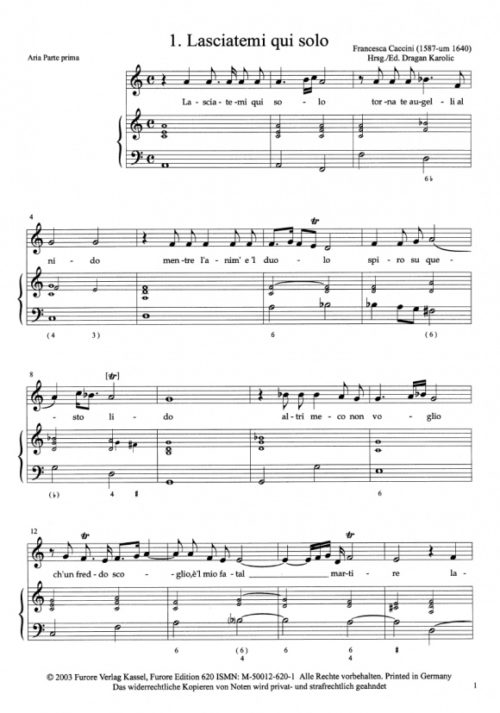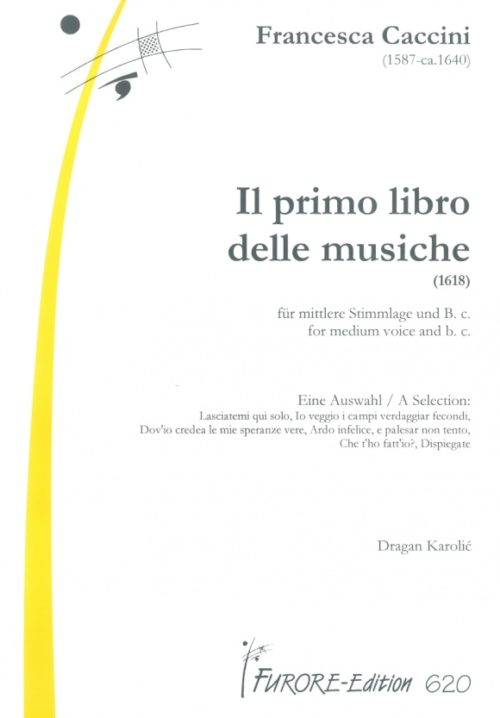Francesca Caccini (Florence, 18.9.1587? 1640) received her musical training from her father Giulio and gave her first performance as a singer in Florence in 1600. When the Caccini family (father Giulio, stepmother Margherita, sister Settimia and brother Pompeo) were staying at the court of Henry IV in Paris (1604/5), Francesca was offered a position there. In spite of further attractive offers from the courts of nobles in Rome and Ferrara she remained in Florence and entered the service of the Grand Duke Ferdinando di Medici in 1607. Francesca Caccini stayed in this city, one of the most important cultural centres of the time, for the rest of her life (with the exception of a period spent in Lucca in the years 1626-1630). It is safe to assume that the Francesca Caccini whose death was recorded in 1640 was the composer herself. The earliest reference to her work as a composer is found in one of her letters (dated 10 September 1606) to the poet Michelangelo Buonarroti, in which she thanks him for the poems sent to her to be set to music. Her first opera La Stiava was performed in 1607. By 1625 she had written at least another 5 stage works (2 of them jointly with Marco da Gagliano): Il passatempo (1614), Il ballo delle Zigane (1615), La fiera (1619), Il martirio di S. Agata (1622) and La liberazione di Rugiero dall’isola d’Alcina (1625). All of them, apart from the last, have been lost without trace. Her only collection of monodies, Il primo libro delle musiche a una e due voci, was published in 1618. Francesca Caccini was one of the finest singers of her day and accompanied herself on the lute or the harpsichord. After her father’s death in 1618 she stood alongside Jacopo Peri as the most important musical figure in Florence.
Produktkategorien zeigen



